Electric Bikes
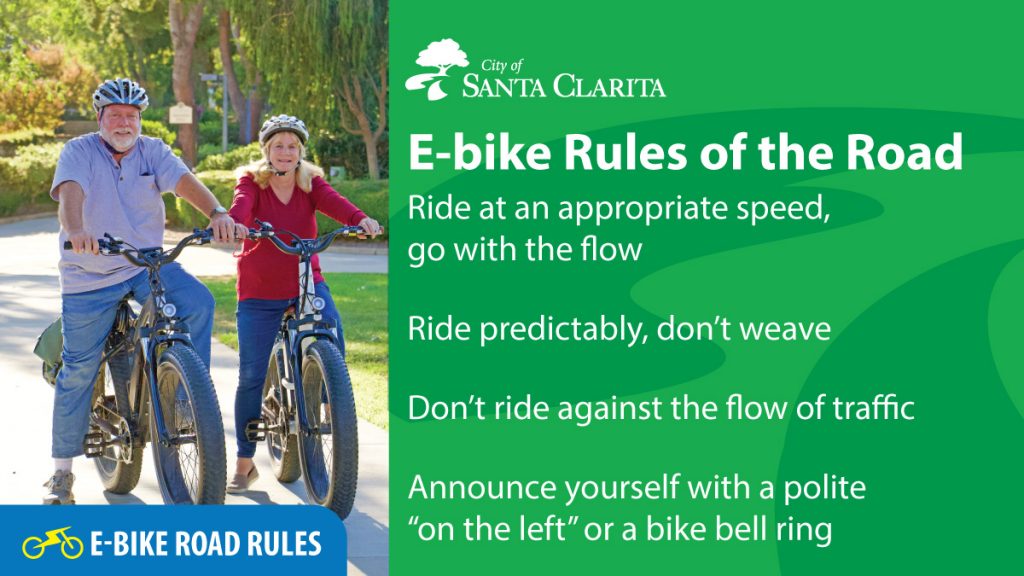

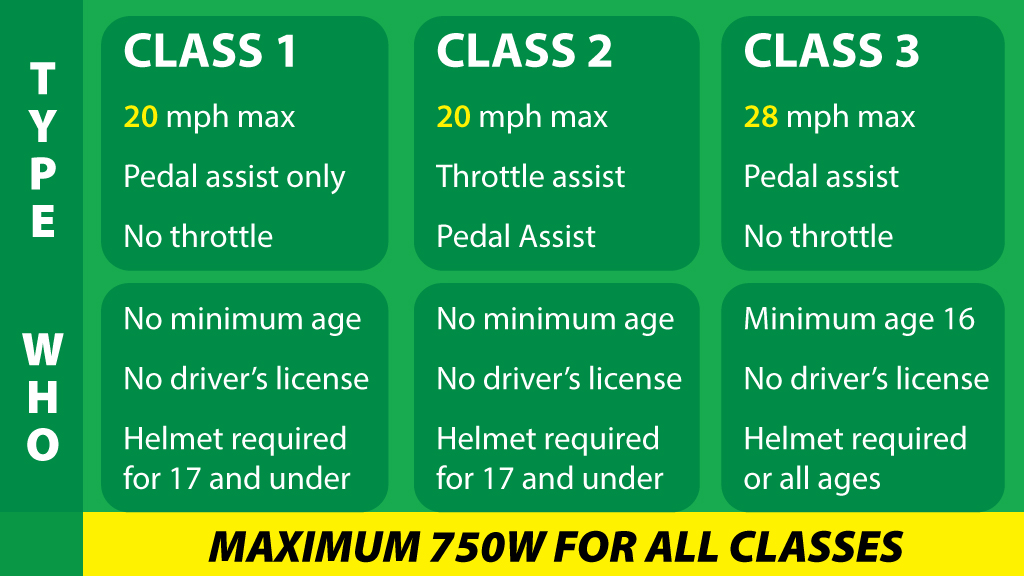
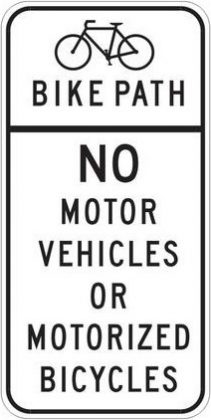 Quite often we hear residents ask “why are these bikes on our trails when posted signs clearly prohibit them?”
Quite often we hear residents ask “why are these bikes on our trails when posted signs clearly prohibit them?”
It is true that signs on the trails prohibit motor vehicles and motorized bicycles, but according to California Vehicle Code, most E-bikes are classified as conventional bikes. As such, the same rules of the road that apply to conventional bikes apply to E-bikes. There are three classes of electric bikes which are listed below, each with varying rules and regulations. It is the rider’s responsibility to know which class E-bike they are operating.
Please note, any vehicle with power in excess of 750 watts falls outside of these three classes and is not considered an E-bike.
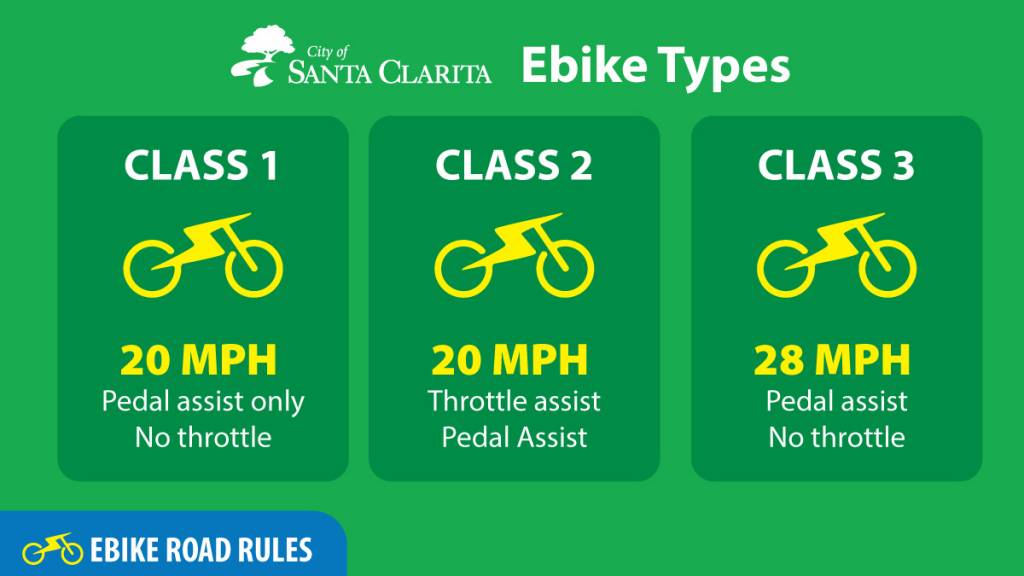
It is important that you are aware of which class E-bike you are riding. Each class carries with it different rules and responsibilities. The graphic below highlights some of the key differences.
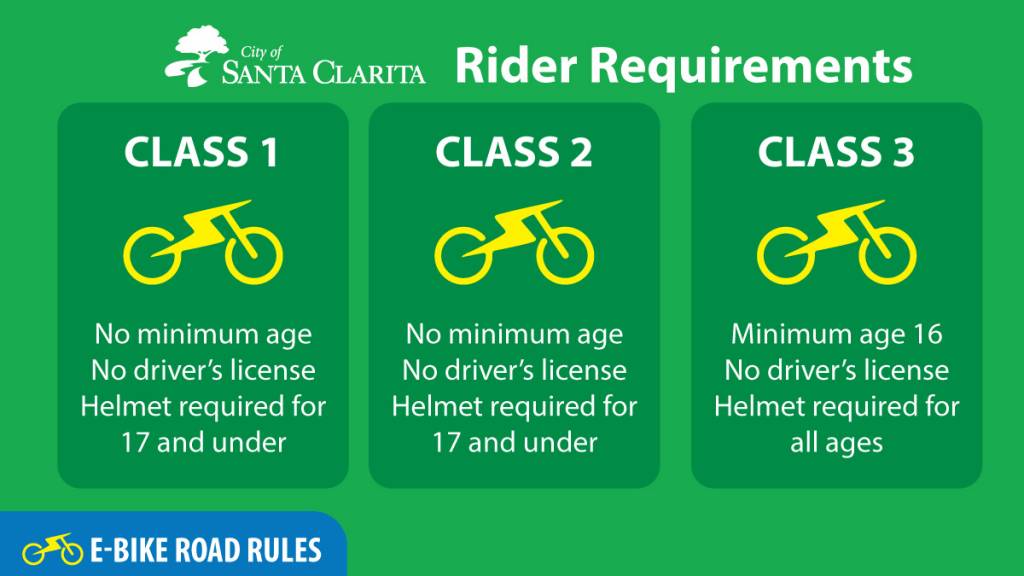
Electric bikes are a fantastic way to get around. They reduce vehicle trips, meaning they also reduce traffic and pollution. With over 110 miles of bikeways in Santa Clarita electric bikes are an ever more popular way to commute, shop, or simply enjoy the outdoors. Riding responsibly and knowing the rules of the road helps keep Santa Clarita a bicycle friendly community.
Electric Motorcycles
Understanding E-Motorcycles and the Law in Santa Clarita
E-motorcycles are growing in popularity, especially among younger riders. However, many parents may not be fully aware of what they are purchasing. These high-powered electric vehicles often resemble bicycles but are, in fact, considered off-highway vehicles (OHVs) under California law.
E-motorcycles are growing in popularity, especially among younger riders. However, many parents may not be fully aware of what they are purchasing. These high-powered electric vehicles often resemble bicycles but are, in fact, considered off-highway vehicles (OHVs) under California law.
E-motorcycles are not permitted on:
- City streets and public roadways (unless properly licensed and registered)
- Sidewalks or pedestrian paths
- Trails and bike paths
- City parks and open spaces
In order for an e-motorcycle to be operated legally on public streets within city limits, all of the following must apply:
- The rider possesses a valid Class M (motorcycle) license
- The rider wears a DOT-approved motorcycle helmet
- The vehicle is:
- Registered with the California DMV
- Properly insured
- Equipped with required safety features, including working headlights, taillights, turn signals, mirrors and a horn
Failure to meet these requirements can result in citations, fines or impoundment of the vehicle.
Parents are encouraged to carefully research any motorized vehicle before purchasing it for a child or teen. If a product is advertised as a “bike” but includes a throttle, lacks pedals or can exceed 20 mph, it may fall under a different legal category than an e-bike.
For questions about what is legal to ride in Santa Clarita, please contact the Santa Clarita Sheriff’s Station or consult with the California DMV for vehicle classifications and licensing requirements.
E-motorcycles may be ridden legally in designated OHV areas, such as:
- Rowher Flats Off-Highway Vehicle Area
- Hungry Valley SVRA (Gorman)
These areas are specifically designed and maintained for off-road vehicle use.






